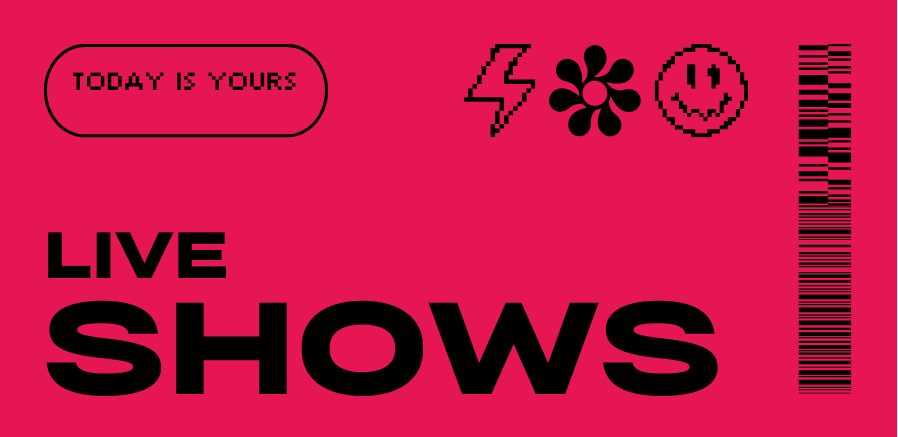Entering Darynka’s avant-garde aural universe has been a transformative experience so far. An enlightened producer, musician and former visual art curator, the Ukrainian icon unveils today a boundary-pushing record, ‘body.404’. Exploring leftfield electronica from a multitude of angles, the EP collects a variety of sonic sources and references, ranging from industrial textures to eclectic cinematic goodness. Coupled with Darynka’s glitchy, twisted vocals, the record feels incredibly futuristic and borderless, still maintaining a certain relatability and melodic flair.
Focused on the “disintegration and transformation of the body in a hyper-digital world”, ‘body.404’ is so nuanced and unique that it almost resembles an art installation, a once-in-a-lifetime experience kindly granted by Darynka for any like-minded listener out there. As always, this is not a record for everyone; it takes commitment and the willingness to enter mysterious territories. To the ones who dare, ‘body.404’ will reveal itself as truly rewarding and hypnotising.
Intrigued by the Ukrainian creative’s fringe artistry, we caught up with her to learn more about her creative processes and overall ethos. Interview below!
Hey Darynka, thanks for chatting with us! I have enjoyed listening to ‘body.404’, certainly a challenging and boundary-pushing record. It reminds me of a variety of things, ranging from Holly Herndon to Miss Kittin, John Hopkins and so on… I am curious, is there a particular artist or producer that has inspired you through your musical journey?
Hey! Thanks so much for doing this interview with me — I really appreciate the thoughtful listen and the space to talk about ‘body.404’. You mentioned it reminds you of a variety of things, that’s probably because I’ve listened to a variety of music through very different stages of my life!
I started with such artists as Björk and Fiona Apple when I was younger, then got into the underground Berlin club scene while doing my master’s degree and living in Germany. Later, when I worked as a curator in visual arts, I moved into more experimental sounds, looking for the right textures to match visual concepts.
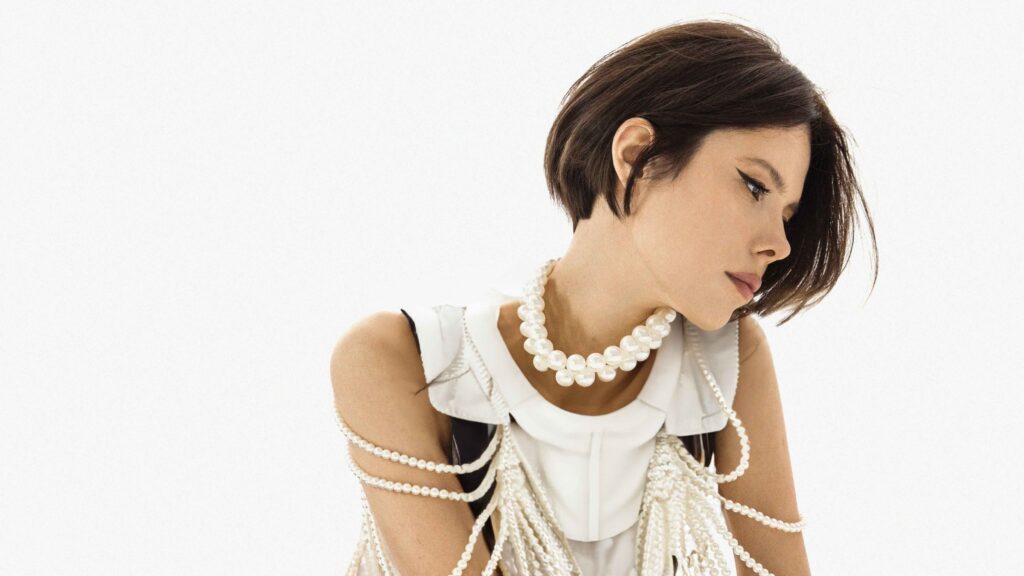
As a producer, I began with dancefloor-oriented music — it started as a hobby when I lived in Fontainebleau (near Paris). My husband was doing an MBA, we partied a lot, and I played music for fun at endless student parties. But quite quickly, I realised how much I loved making music. I shifted to it full-time while living in Dubai — a scene very focused on melodic house and techno, which wasn’t really my thing.
More than a year ago, I left Dubai and started living in different places without a permanent base. That time away from a fixed local context was so freeing — it allowed me to finally go after the music that truly inspired me, even if I didn’t see people around me doing the same.
One of the biggest moments for me was hearing SOPHIE for the first time. I remember thinking, “Wait, you can do that with sound?” The sound design was wild, and I loved how bold it was. Then I discovered Sega Bodega, Arca, FKA twigs; all very different, but each of them opened up new spaces for me. At the same time, coming from a club background, I’ve always had a soft spot for Detroit-inspired beats, and I really admire producers like Jensen Interceptor. I know it’s a weird combo — hyperpop aesthetics and electro roots — but somehow, here we are (for now :))
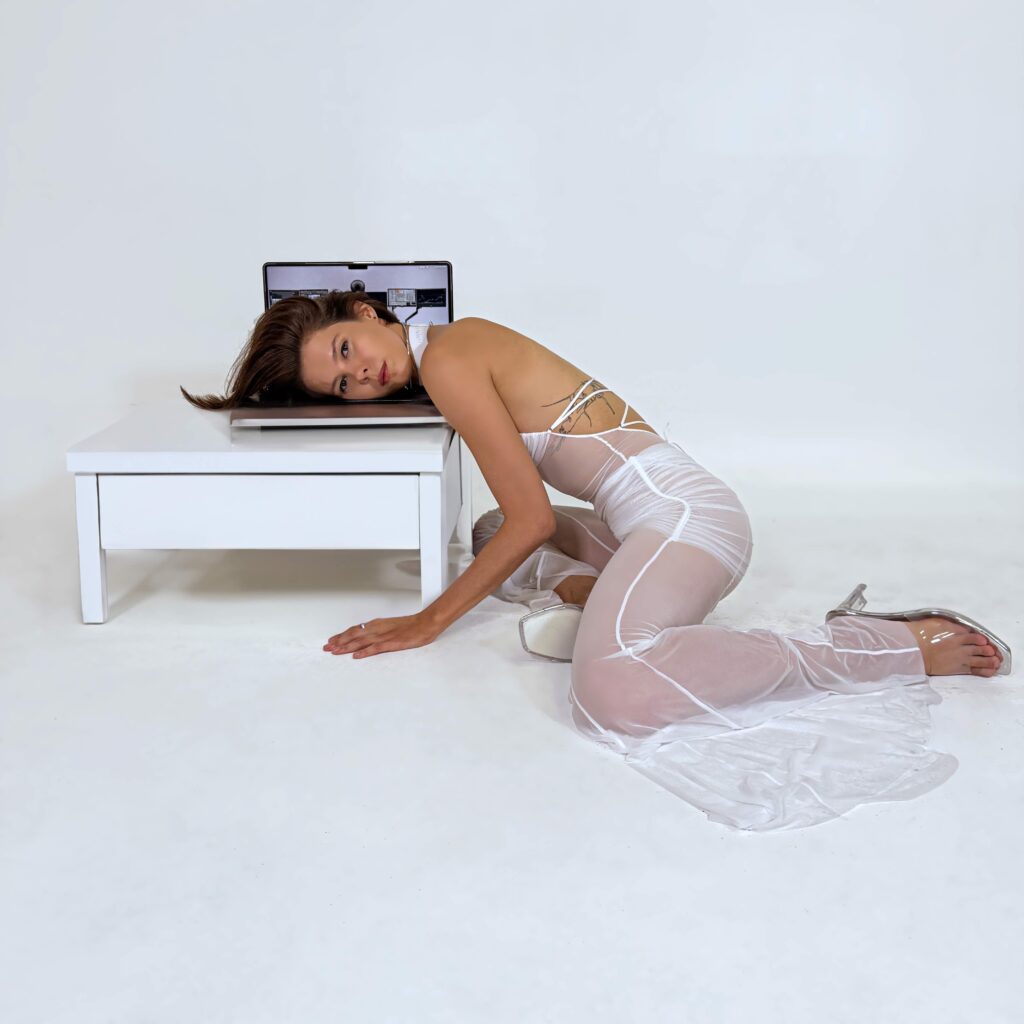
You are not just a talented aural creative, but a holistic one, with a former career as a visual art curator. Can you tell us about your upbringing? How did you end up so entangled in the cultural landscape?
I started really young. When I was 10, I won my first gold medal at an international art competition in Portugal. I was already studying painting at an arts-focused school in my hometown Kharkiv (Ukraine), and since then, art has always felt like a second language — a way to express what I couldn’t say in words.
After finishing my studies in Germany, I wanted to become a visual artist, but I also needed a job to be independent, and like many other young artists, that was a challenge. So I started working at a gallery — as close to the art world as I could be — and quickly became a curator. I loved that work. Over time, I began curating international projects outside the gallery space and co-founded a few of them, including the Kyiv International Sculpture Symposium. That journey brought me to co-founding and becoming the CEO of Cittart — a curated digital marketplace for visual art, where I could use all my experience and help artists like myself to connect with their audience.
Music came in a bit unexpectedly. When I stopped painting to focus on building the startup, something felt missing, and that space was slowly filled by making music. At first, I was making music just for fun, but very soon I realised how familiar it felt. It was a new medium, but the way I approached it, in terms of thinking and feeling, was very similar to how I worked with visual art. I didn’t resist when it pulled me in completely.
Now, I feel lucky to combine all of these parts: the conceptual thinking I developed in visual art and curating, the interest in AI and digital culture from my time running a tech startup, and the emotional storytelling of music. For me, they’re not separate paths — they’ve all been part of the same journey. It all somehow comes together; the way I used to think conceptually in visual arts and curating, the curiosity for tech and digital culture from my startup years, and the emotional, intuitive side of music. I didn’t plan it this way, but in the end, it’s just different forms of the same practice, blending emotion, concept, and technology into something personal.
Delving deeper into your latest EP ‘body.404’, it’s easy to notice its intricate and futuristic take on electronica, coupled with an even more complex overarching ethos. Is there a particular philosophy behind it? What does the record mean to you?
This is a fictional EP, so the futuristic aesthetics felt natural. I imagined it like a voice from the future, or maybe from an alien intelligence, speaking to you very closely, as if there’s no space left between you and it. That closeness, combined with the uncertainty of whether what you’re hearing is real or not, creates the tension. I think that’s where the complexity comes from. I wanted the listener to enter that space, but not to dictate how they should feel. There’s enough ambiguity (read complexity, I guess) in the record for people to bring in their own interpretations.
I travel a lot, and with every new place, I notice how my physical presence changes, but my digital self stays constant — sometimes even feels more emotionally engaged. That contrast between online connection and real-world isolation (when you travel, you don’t know many people around you) inspired me a lot. ‘body.404’ is just my way of exploring that fragmented sense of self, and making space for it to exist.
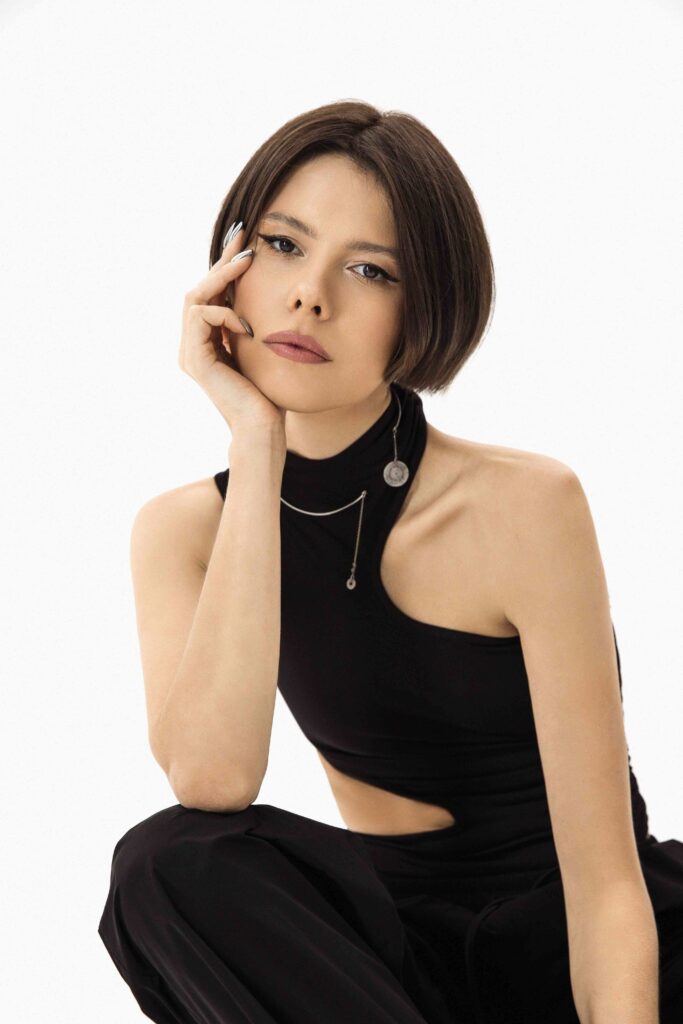
How do you approach your production work? I love the way you experiment with vocals, truly transforming them into fragments of sonic goodness. How does your creative process unfold? Do you work alone or with collaborators?
I manipulate the voice a lot: slicing, glitching, automating pitch and formants so it shifts between sounding masculine, childlike, synthetic, or real. It creates this strange feeling where the voice doesn’t feel fully human, but still comes very close — almost too close. That intimacy makes it feel deeply emotional, even when you know it’s not. My process usually starts with an idea. I write separate phrases or sometimes full texts. Once I’m clear on what the track is about and I feel it, I move to production.
I usually begin with the kick (which is rarely a typical 4/4, so the pattern really matters), then snare or a few main percussive elements, or sometimes something noisy to build atmosphere. After that, I’ll add a long chord or a few notes to feel the key, then bass and voice. Or, sometimes bass comes right away with kick. Then I build out the harmonies and melodies around that.
I work alone and produce everything myself, except for mastering. I also have an amazing mentor, Ilya Misyura (Astronata, dubbeans, and many other projects), who supports me with feedback, as well as two experienced music producers and sound engineers, Philip Roeder and Dominic Hoffmann, from the Pick Yourself coaching program based in Spain. Their input has helped me grow a lot. Recently, I also started vocal training with the amazing artist Nata Smirina. So yes, I work alone — but I’m lucky to be surrounded by truly inspiring professionals.
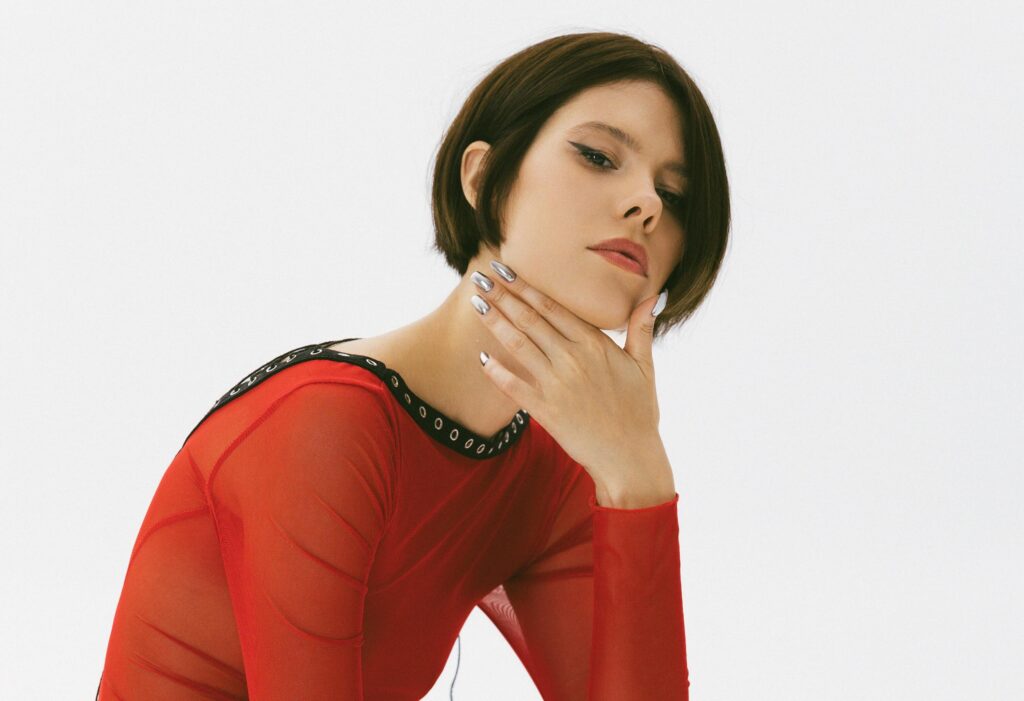
What should the listeners look out for when approaching the EP? Can you suggest a brief listening guide to it?
I come from the world of visual art, where people often ask: “Should I read the exhibition text first, or just experience it?”. I always suggest: “First, feel it. Let it speak to you. Then read the context — and let it add depth, not overwrite your own impressions.” I’d say the same about this EP. But if you want a small guide, something to read after you listen, I’d suggest this:
“Imagine you’re in a near future where AI has become so advanced that people can form real emotional connections with it. And then you start wondering: does that AI need a body for you to feel something for it? Or maybe you don’t need a body either. Maybe the body is just a limitation — something that anchors you to one place and one moment.“
The answers — if they exist — are yours to find 🙂
You seem to be always on the move; I’d be curious to know if different places inspire you in different ways; does the music you do change in relation to where it’s been made (even marginally)?
Actually, it’s kind of the opposite. The more I travel, the more it pushes me to find and hold onto my own sound. When you move through so many cultures — from temple parades in Sri Lanka to hypnotic rhythms in the Middle East, and then land in the laid-back vibe of California — it’s so much. Too much, almost. At some point, you stop trying to absorb it all and start asking yourself: OK, but what’s my sound like? So in a weird way, travel helped me disconnect from outside expectations and go in more deeply. Not to the place I’m in — but to my voice.
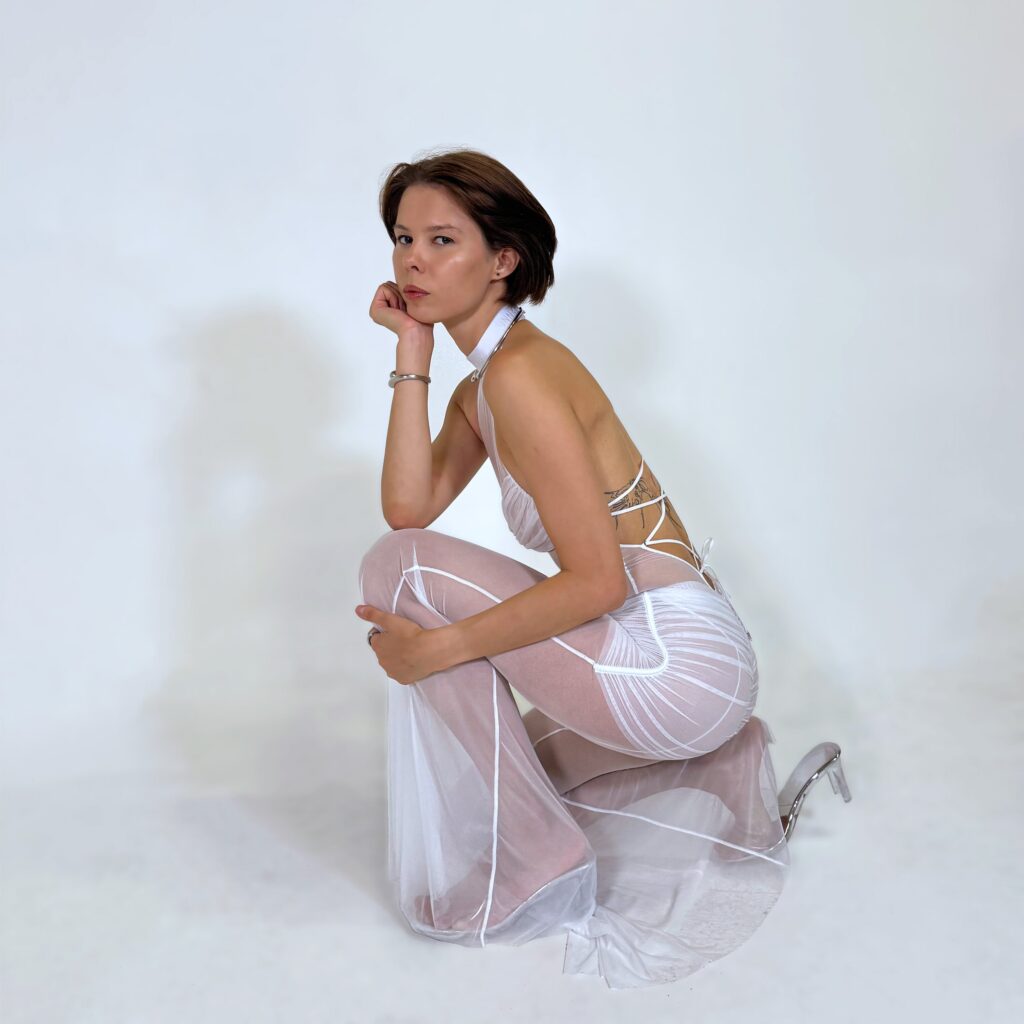
Do live performances happen in Darynka’s unique artistic universe? If so, what can we expect from them?
Right now, I’m in a phase where I’ve consciously chosen to focus on production — it’s my top priority at the moment. I’m fully dedicated to growing as a music producer, and I’ve taken this time to really deepen that side of my work. Because of my current lifestyle — constantly travelling, living without a permanent base — I can’t carry equipment or prepare properly for live shows. So for now, I’m producing exclusively. You could say I’ve optimised my baggage for Ableton, not for touring!
That said, I’m working on my next EP, which I plan to release later this year, and I’m hoping to settle soon. California feels like a place I could imagine staying for a while. And once I do, live performances will definitely become part of what I do. I’m especially excited about bringing in my background in visual arts — working with generative visuals, and building an audiovisual experience. Something intimate, immersive, and slightly strange. So yes, live shows are coming, but not yet!
What are the next steps for your project? Anything exciting on the horizon?
I’m currently working on my next EP. Conceptually, it continues many of the questions I raised in ‘body.404’, but it moves toward a slightly more emotional, more exposed tone. I’d love to release it before the end of this year. I’m also very open to collaborations with other musicians, technologists, or visual artists. I see my project as something that can evolve in different formats: performance, installation, and even hybrid spaces between music and contemporary art.


